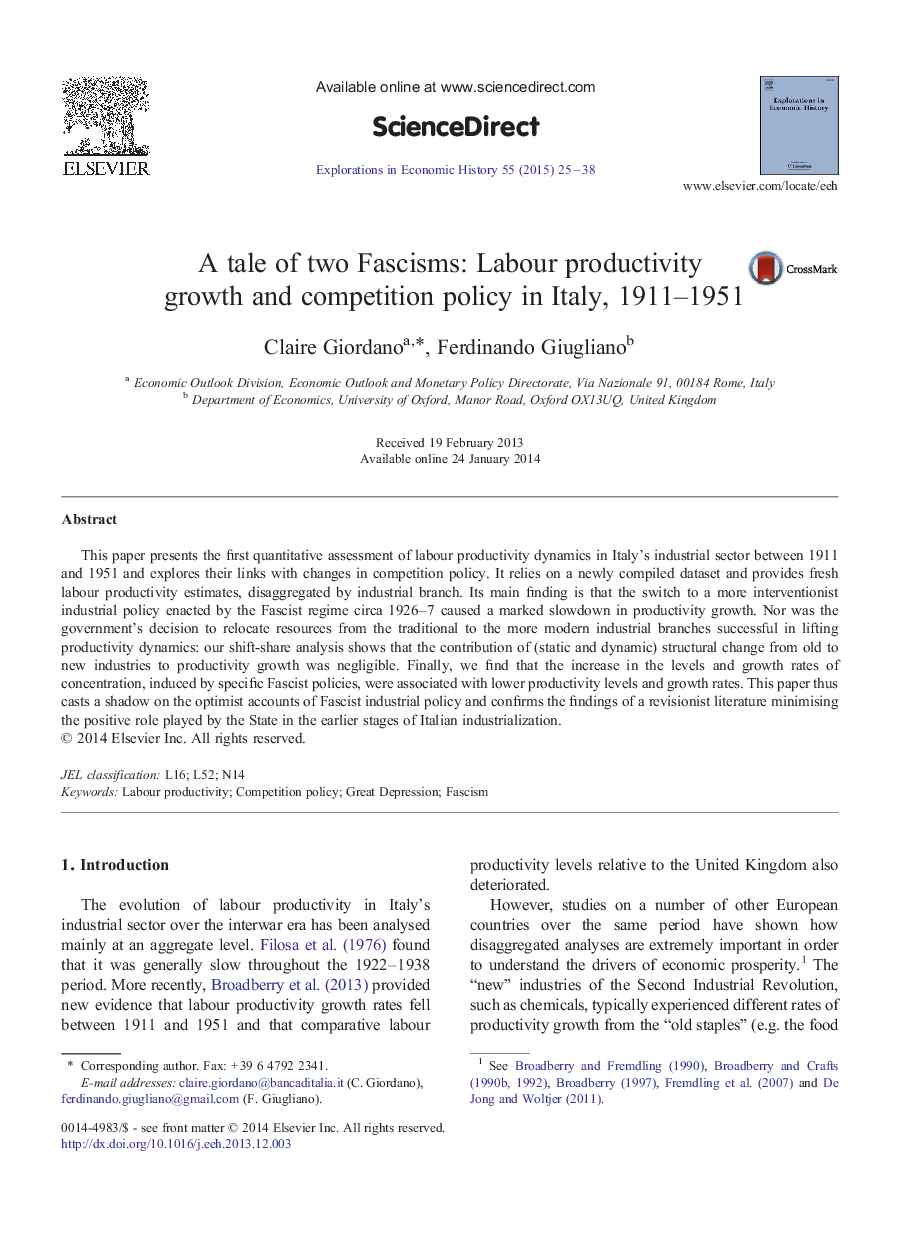| Article ID | Journal | Published Year | Pages | File Type |
|---|---|---|---|---|
| 5068781 | Explorations in Economic History | 2015 | 14 Pages |
This paper presents the first quantitative assessment of labour productivity dynamics in Italy's industrial sector between 1911 and 1951 and explores their links with changes in competition policy. It relies on a newly compiled dataset and provides fresh labour productivity estimates, disaggregated by industrial branch. Its main finding is that the switch to a more interventionist industrial policy enacted by the Fascist regime circa 1926-7 caused a marked slowdown in productivity growth. Nor was the government's decision to relocate resources from the traditional to the more modern industrial branches successful in lifting productivity dynamics: our shift-share analysis shows that the contribution of (static and dynamic) structural change from old to new industries to productivity growth was negligible. Finally, we find that the increase in the levels and growth rates of concentration, induced by specific Fascist policies, were associated with lower productivity levels and growth rates. This paper thus casts a shadow on the optimist accounts of Fascist industrial policy and confirms the findings of a revisionist literature minimising the positive role played by the State in the earlier stages of Italian industrialization.
